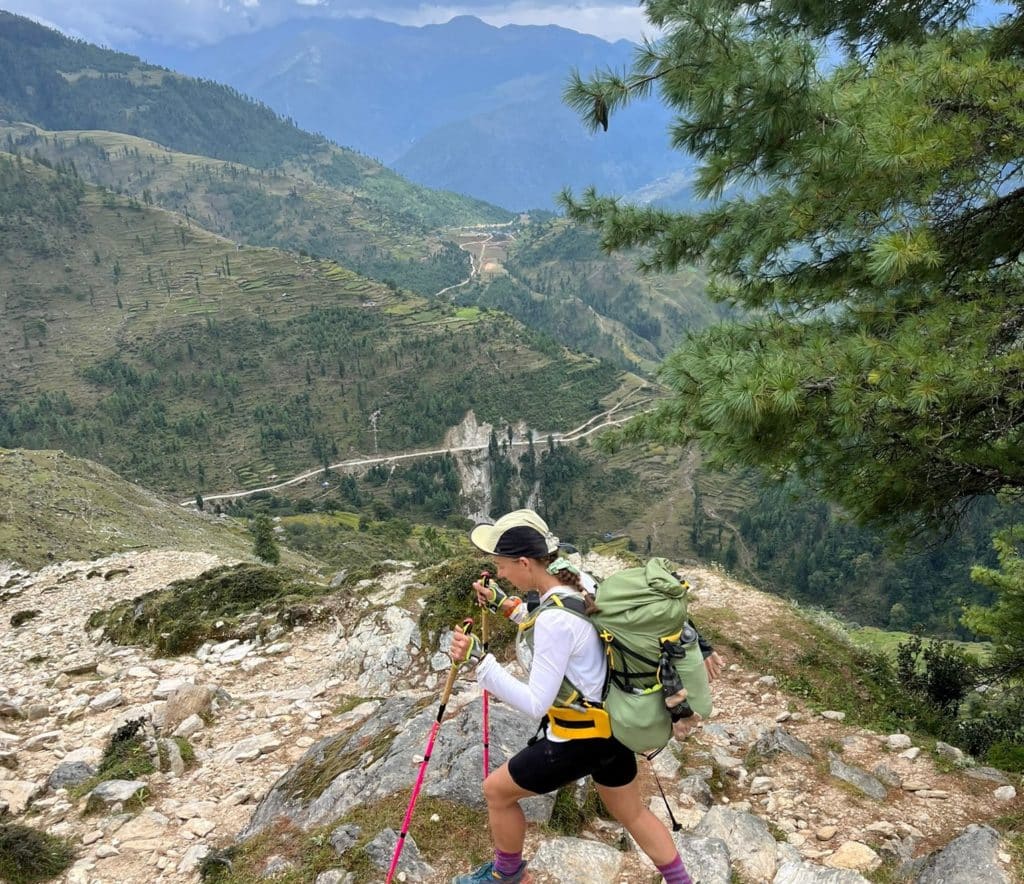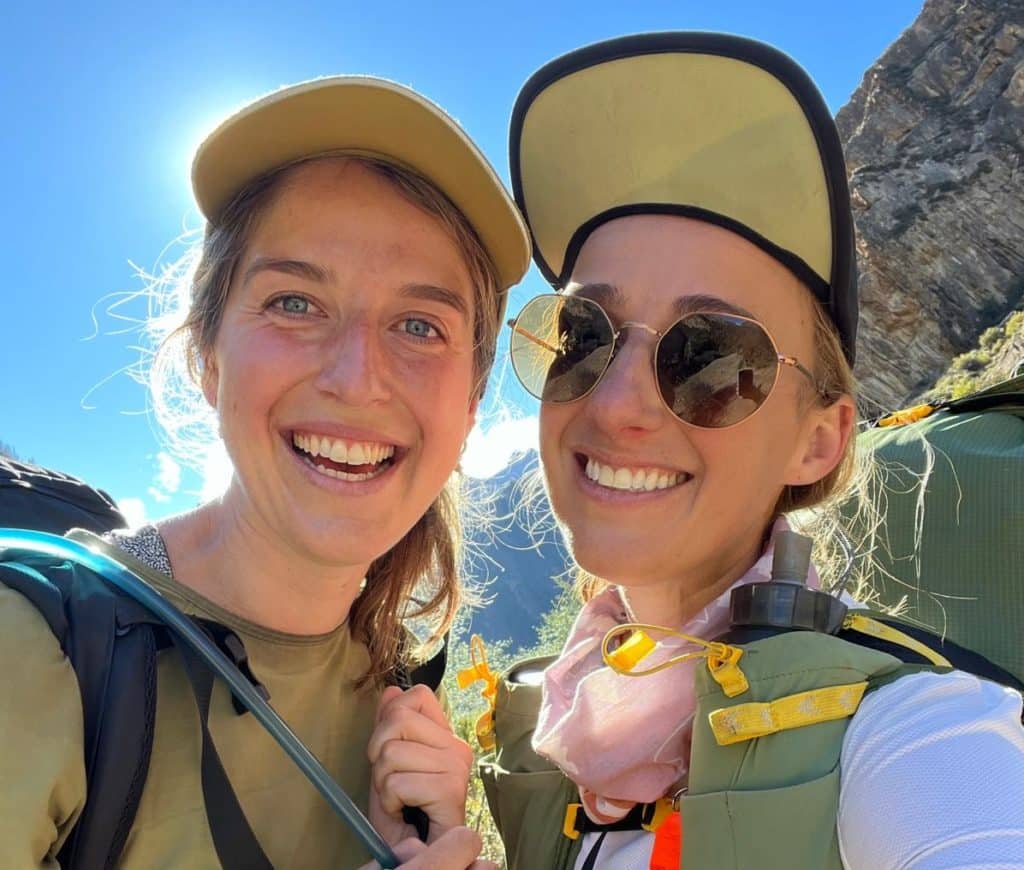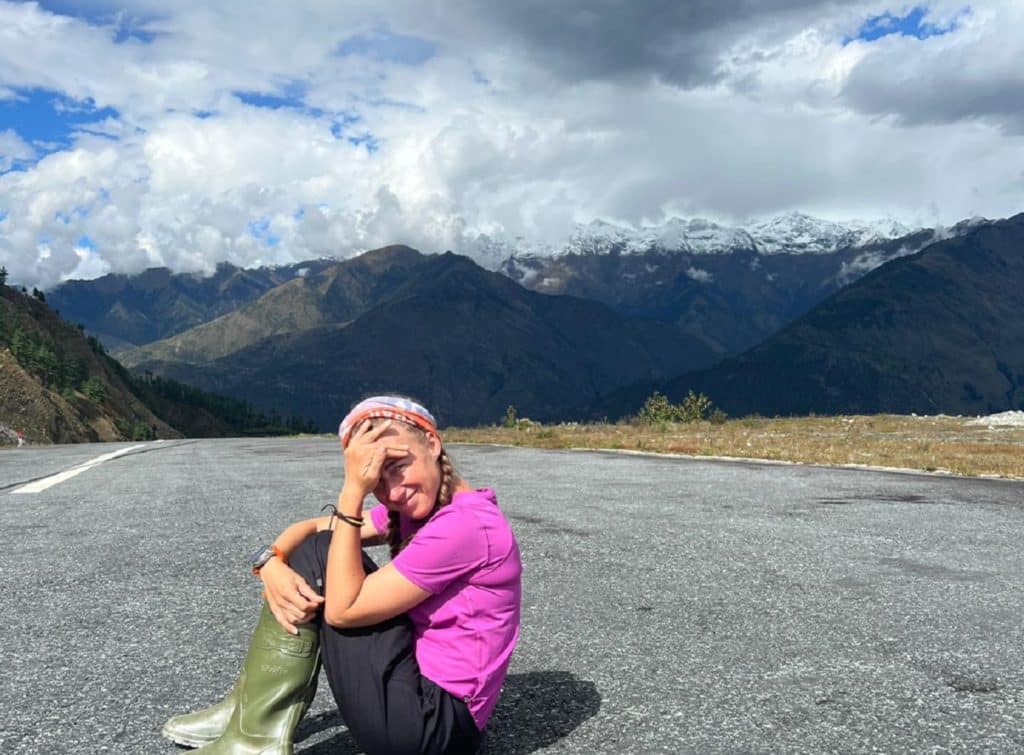Endurance athlete Samantha Gash is used to pushing herself to the limit. She’s run ultra-marathons in Chile, China, the Sahara Desert and Antarctica, and once ran 3253 kilometres from west to east across India.
Now, she’s putting her limits to the test again, with a 50-day, 1000-mile traverse across Nepal’s Great Himalaya Trail. She’s nearly halfway through the journey, alongside her friend Dr Jessie Ling.
Speaking to Women’s Agenda in the early morning from Nepal, Gash shares more about the journey, including how she was caught up in a severe weather system and witnessed the devastating impact of dangerous landslides on local communities.
“My teammate Jessie and I were caught in the Dolpa region, an area where no one really speaks English. There are only very primitive supplies, there was no power, and we couldn’t go through the mountain passes, so eventually we had to make our way to a regional airport, and we were stranded there for quite some time,” Gash says.
“We were unable to get any information if we could get out, and it was really very challenging.”
The traverse across the Great Himalaya Trail will see Gash and Ling navigate the remote, rugged and often minimally defined trails of Nepal, spanning the breadth of the country. The pair’s traverse, which they’ve called “Resilience in Motion”, is being undertaken to raise funds for World Vision’s work supporting women and girls in Nepal, to reduce child marriage and gender-based violence, as well as negative customs around menstruation.
“There are some incredible programs that are improving basic hospital supplies and giving women sanitary solutions, educating them about the fact that having your period is not something to be ashamed of, talking about some of the traditions where in some conservative traditional communities, women are banished from their home during menstruation,” Gash says.

Gash is extremely passionate about the cause, and says she wouldn’t be doing the traverse if it wasn’t about something bigger than herself.
“If you can use the things that you’re passionate about for a purpose bigger than yourself, it not only has a greater meaning to what you’re doing, but it allows you to go through your step in the day with your eyes wide open,” Gash explains.
“I’m a mum, it’s a big deal to be away from my four-year-old son for this period of time. I want to make this time count; I want it to mean something beyond just a physical exploration.”
Gash says she is okay with the idea of suffering physically during the traverse if it means she can bring attention and funds to the plight of women and girls in Nepal.
“In my career as an endurance athlete, I’ve suffered physically a lot, but I think it’s important to make that degree of discomfort count for something,” she says.
“Jessie and I were really lucky before we went out and started our traverse, we were able to go with World Vision to some of their rural programs. We were able to meet with women, girls, and families and actually hear their perspectives on how these programs are making an impact. Whether they are, whether they’re not, you definitely go in there with your perspective open.”

Gash explains that with the active landslides she’s witnessed on the trail, and snow that is two metres deep in some places, communities in Nepal have already lost their livelihoods, and ability to have food resources and fuel throughout winter.
“It’s really going to cause people a lot of challenges, and then the roads and trails are just destroyed,” she shares. “So, it’s very easy to go: our Point A to Point B traverse is being affected, but instead we are trying to be really grounded in what’s important right now and just work out what our next piece of information is.”
So what does it take to want to put yourself out there, and challenge yourself on massive expeditions like this one on the Great Himalaya Trail?
Gash says she thinks it’s a mix of curiosity, passion for a cause, and a willingness to go on foot.
“Exploration and curiosity are really big parts of what I do,” she says.
“It’s important not to have a fixed mindset and to ask a lot of questions often in really complicated environments where you’re trying to kind of come to terms with differences of cultures, languages, customs, and traditions.”
Sam Gash and Dr Jessie Ling are mid-way through their 1000 mile trek across the Great Himalaya Trail. You can find out more about their Resilience in Motion traverse here and contribute to their World Vision fundraiser here.


